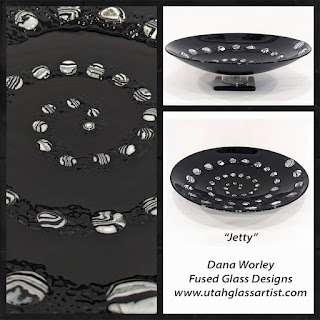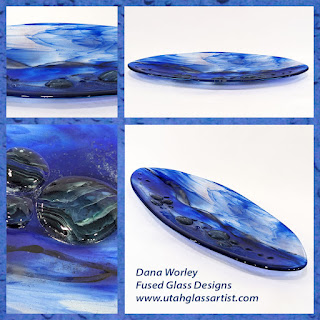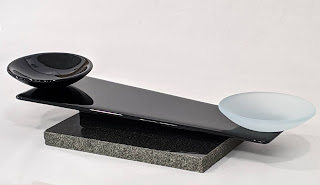Kiln-formed Glass and Heatwork
Above 1250 degrees Fahrenheit, the glass begins to soften
beyond what is needed for bending the glass to shape during a slump or drape. Temperatures
greater than 1250 are high enough to sinter powders, tack fuse pieces of glass,
set enamels, and fire polish glass surfaces. A variety of effects can be
achieved once the glass begins to soften and before it reaches full-fuse
temperatures.
Glass artists sometimes talk about heatwork in relation to fused glass. Heatwork is the amount of heat a piece has been subjected to over one or multiple firings. You’ll hear people say that “heatwork is cumulative,” which refers to the heat’s effects on glass with each additional firing. If a project is fired once to a tack fuse and is fired a second time to add more components or fire polish, this additional firing (or heatwork) will affect the original tack fuse. Depending upon temperature, rate of increase, color of glass, and hold times, the effects may be hardly noticeable or they may be significant.
The photograph at the beginning of this blog is a 22 inch bowl called "Jetty". This artwork was fired to ~1400 degrees. At this temperature, the glass maintained visual and physical texture, resulting in a more interesting piece of art than if the glass had been taken to a full fuse. The same is true for the oval platter below.
If you would like to learn more about the effects of heatwork on kiln-formed glass, check out two free resources offered by Bullseye Glass:
Video: Considerations for Multiple Firings (https://videos.bullseyeglass.com/videos/considerations-for-multiple-firings/)
PDF Document: Heat and Glass (https://www.bullseyeglass.com/methods-ideas/technotes-4-heat-a-glass.html)
I hope you've found this post interesting. If you are interested in learning more about fused glass, my blog has many studio tip, techniques, and tutorials for you to peruse.
Happy fusing!
Dana



